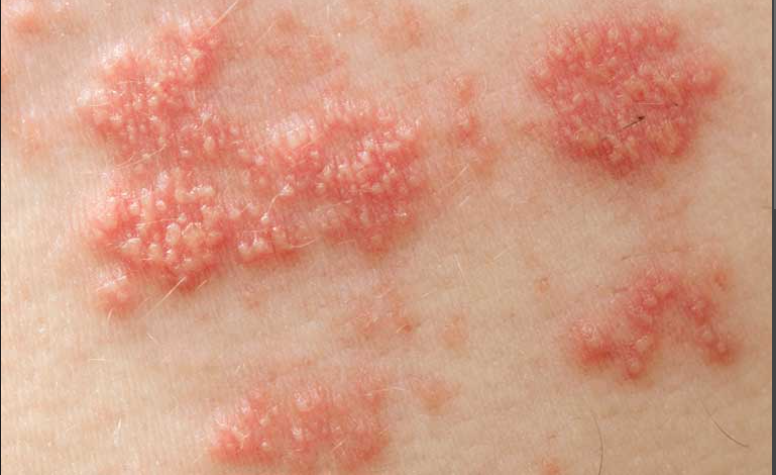Prompt treatment is crucial to avoid severe neurological complications of shingles
The virus that causes shingles is incredibly patient. Initially, the varicella zoster virus, which typically strikes children, causes chickenpox. The highly contagious chickenpox virus can cause a blistering rash to spread across the back, chest, face, and scalp. Most children recover from chickenpox within a few weeks; the rash goes away, and the illness is forgotten. In certain instances, chickenpox can be more serious, affecting the eyes, throat, and other body parts, or it can cause complications like bacterial infections or dehydration. The majority of people only get chickenpox once and develop immunity for life.
Nonetheless, VZV persists in the body, dormant within clusters of nerve cells. Latent VZV can reactivate many years or even decades later, giving rise to an unwanted encore that manifests from within. It is more than just adult chickenpox. The appearance is different, to start. Usually confined to one side of the upper torso, the rash consists of bands that cover the affected area. The itching is severe and persistent, and it is painful.
Also read-Scalp Psoriasis : A Patient’s Guide To Scalp Psoriasis And Its Symptoms

Cause of Shingles
Unlike chickenpox, shingles cannot be directly contracted from another person who has the disease. Rather, shingles develops when VZV “wakes up” in your body and reactivates in nerve cells. According to Oaklander, the virus resides inside a group of neurons known as a dorsal root ganglion in healthy individuals who have recovered from chickenpox. Information from the skin, glands, organs, and limbs is transmitted to the brain and spinal cord (the central nervous system) by peripheral sensory neurons. These sensory neurons are capable of identifying dangers and coordinating the immune system to defend the body in different ways. Peripheral neurons are susceptible to infection from blood viruses due to their exposed location, according to Oaklander. Among those viruses is VZV.

Risk factors
Even though latent VZV is present in most adults, most do not get shingles. Nonetheless, the National Institute on Aging, a division of the National Institutes of Health, estimates that 1 in 3 individuals will experience a reactivation of the virus. About half of all shingles cases occur in people 60 years of age or older, and the risk increases with age. Shingles can also affect younger people, though cases among those under 40 are uncommon. However, a 2016 study found that over the previous 60 years, the incidence of shingles more than quadrupled for all age groups.

Symptoms
Typically, shingles affect only side of the body in a single area, like the left side of your back. People with shingles have symptoms like these:
- Skin burning, tingling, or numbness.
- Sensitivity of the skin to touch.
- Chills, fever, headache, or upset stomach.
- Blisters filled with fluid.
- Itching can range from mild to painful and intense.
- Blistering of the upper eyelid and redness and swelling around the eyelids, typically involving one eye.
- Burning or throbbing pain in the eye.
- Facial or jaw pain triggered by touch, such as talking, eating, drinking, toothbrushing, or shaving.
- Stomach pain, even without a rash, is due to enteric zoster (in the gastrointestinal tract).

Shingles symptoms follow a pattern where rash typically appears after the first skin sensations. Altogether, shingles usually lasts about three to five weeks, with symptoms appearing and resolving in this order:
- Burning or tingling pain, possibly with itching or numbness on one side of the body.
- Red rash appearing between one and five days after skin sensations begin.
- The rash transformed into fluid-filled blisters a few days later.
- Blisters drying and crusting over in another week to 10 days.
- Scabs disappearing in two weeks or so.
Shingles resolves completely in most cases, but in other cases, people develop persistent aftereffects.

Diagnosis
For doctors to diagnose shingles, a physical examination and medical history are usually sufficient. The symptoms of the illness, which include pain and itching followed by a band of rash on just one side of the body or face, can aid in confirming a diagnosis. The polymerase chain reaction, or PCR, is a laboratory test that can be used to determine the shingles virus. That can be especially useful in verifying zoster sine herpete, or shingles that develop without a rash. According to Dr. Anne Gershon, a pediatric virologist and professor of pediatrics at Columbia University in New York City, some cases of shingles may go completely unnoticed. She has, for example, documented several extremely mild cases that resembled insect bites and that most people would never see a doctor.

Treatment
f your doctor thinks you have shingles, starting treatment immediately is the priority, rather than waiting for test results to confirm VZV activity.
These prescription oral antiviral drugs are approved to treat shingles in the U.S.
- Acyclovir (Zovirax), the oldest medication, is usually taken five times a day for 7 to 10 days.
- Valacyclovir (Valtrex) is usually taken three times a day for one week.
- Famciclovir (Famvir), another second-generation drug, is also taken three times a day for one week.
If you even suspect you might have shingles—you don’t see the blisters but you have unexplained pain or itch around your body, most often of the trunk or around the eye—you should see your doctor immediately to get started on antivirals, Oaklander says.

Also read-Treatment Options For HIV-Positive Parents And How It Affect Fertility And Infant Outcomes
images source: Google
Disclaimer: The opinions and suggestions expressed in this article are solely those of the individual analysts. These are not the opinions of HNN. For more, please consult with your doctor




































